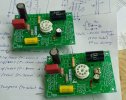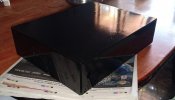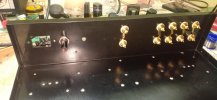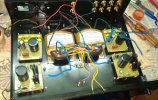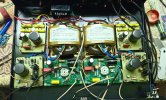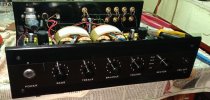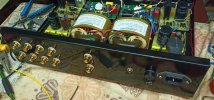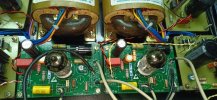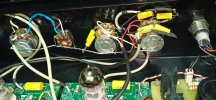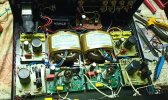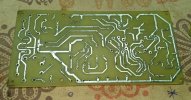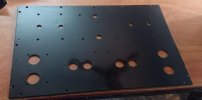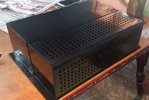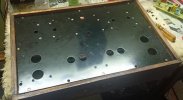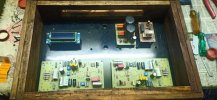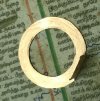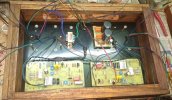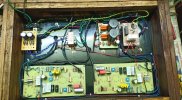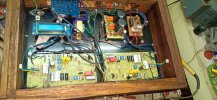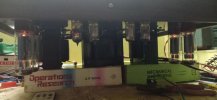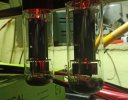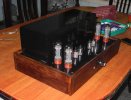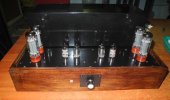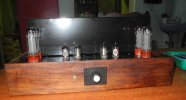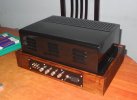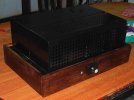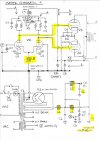When using multiple power transformers, such as shown in the photo below, it is of utmost importance to be sure that all leads are connected in proper relative phase to each other. This applies first to the primary and then, to the secondary AC lead orientations, equally..
Use any simple O-scope, to see that the phase trace of each and every primary and secondary winding is in synch. For example, notice in the photo below, the two blue wires coming off the R-Core secondary, and connected to adjoining boards. The Blue-Blue wires denotes leads off a single winding. However, t
here is no denotation from Blue-Blue, of what is in or out of AC waveform phase, one power transformer, relative to another, or to that single transformer's primary winding..
This can lead to a dual mono design such as this one,
sounding worse than a single power transformer, because of AC phases bucking each other, channel to channel.
Phase determinations can be made, if careful, by A-B ing the sound by ear. I have done this . A far easier and more foolproof way is to use a scope, and observe the sine wave directions.
To that end, I have dusted off my TEKTRONIX scope, variaced it up after a many years non-use, and will use it as suggested herein. I use lots of
multiple power transformers. The overall audible difference, between correct and incorrect phase or every AC winding, ( the sum total of all windings when orientated correctly ), is rather large in my recent listening experiences.
Do not ignore this, you have a 50-50 chance of the AC phase being wrong or right, for each winding, when connected unconsciously !! A
pply proper care, and start with the primaries' orientations first . !!
I am of the belief, that this outlined and important-to-the-final-result procedure is
totally overlooked, by the vast majority of audio industry manufacturers, and amateur DIYers.
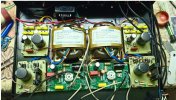
Thanks for reading this !! Share with us all, your resultant listening experiences.
drlowmu
